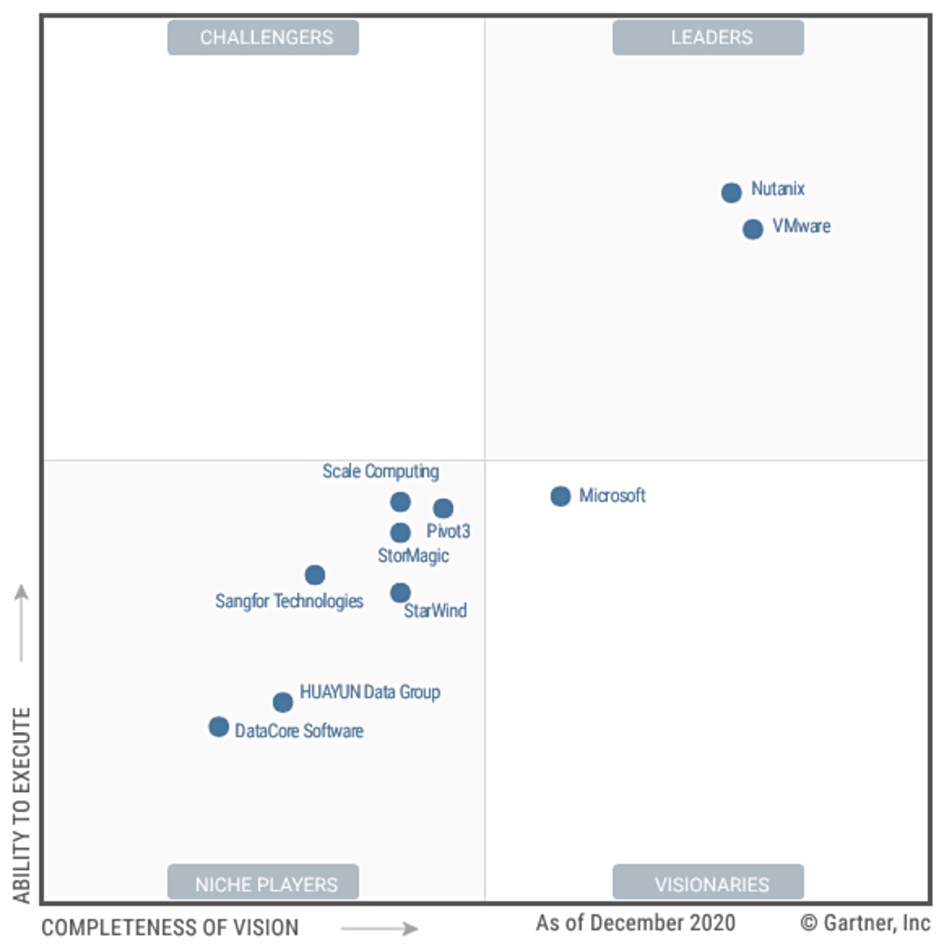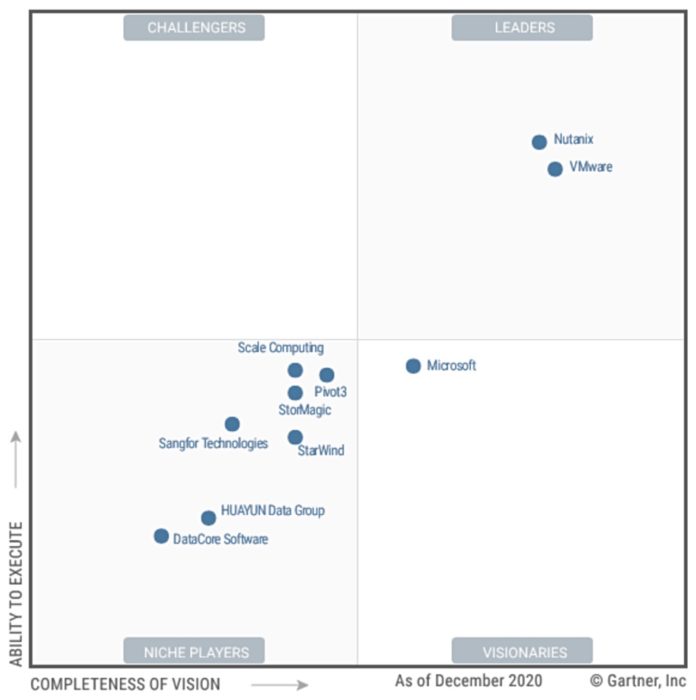Gartner has revised the criteria for the hyperconverged infrastructure Magic Quadrant to include HCI software players only. The changing goal posts has led to the ejection of Cisco, Dell EMC, HPE, Huawei and Red Hat from the 2020 HCI MQ edition.
Last year, the tech analyst firm said HCI systems were available as software to run on standard hardware or as integrated appliances – hyperconverged integrated systems (HCIS).
For 2020, Gartner has tightened the definition to HCI software that provides virtualized compute, storage, networking and associated management from a single instantiation running on server hardware from multiple server providers. Long story short, out go the HCIS products, leaving only HCI software.
Here is the HCI MQ diagram for 2020.

Compare and contrast with the Gartner 2019 HCI (and HCIS) MQ:

In 2020, Nutanix leads VMware in the Leaders’ box – for more details about how they are doing, read The Register article ‘New Nutanix CEO and Azure HCI debut reboot the hyperconverged infrastructure market’.
There are no ‘Challengers’ and Microsoft is the sole ‘Visionary’. We think this week’s Azure Stack HCI launch has something to do with this – read our article, Dell launches pay as you go Azure Stack HCI.
Pivot3 moves from Challenger to a ‘Niche’ player – and although Gartner hates it when we use such terms, this is effectively a demotion. Scale Computing, StorMagic and Starwind get promoted in the Niche players’ box.
We were surprised by Red Hat’s absence from the Gartner 2020 HCI MQ. Gartner explains the company was “dropped due to a narrowing of its focus to only three use cases.” For inclusion in the MQ, the analyst firm requires HCI vendors to meet user requirements in at least four use cases such as core IT, cloud, edge, mission-critical and VDI.
Red Hat says its Hyperconverged Infrastructure for Virtualization 1.6 “is for departmental and lines of business groups, remote and branch office sites, DevTest, and other operational use cases” .
N.B. Standard Gartner MQ explainer: the magic quadrant is defined by axes labelled ‘ability to execute’ and ‘completeness of vision’, and split into four squares tagged ‘visionaries’, ‘niche players’, ‘challengers’ and ‘leaders’.








